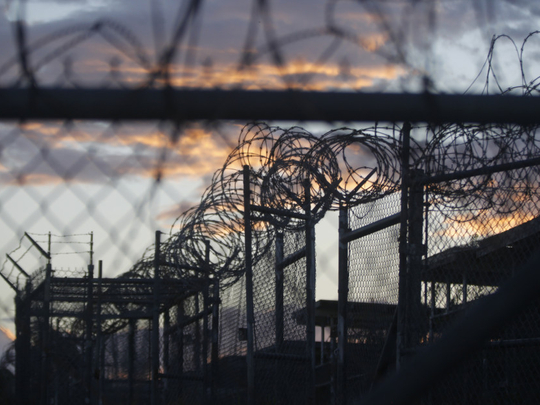
Secrecy and justice don’t mix. Just look at the latest contortions in the case of Khalid Shaikh Mohammad, the accused mastermind of the September 11 attacks.
Mohammad’s lawyer has filed a motion alleging that, at the prosecutor’s request, the judge allowed the government to destroy evidence that Mohammad could have used in his own defence. The proceedings of the special military tribunal at Guantanamo Bay are so secret that no one is allowed to say what the evidence was or to read the motion.
Reporters covering the trial surmise, with good reason, that the evidence probably relates to secret sites maintained by the Central Intelligence Agency where Mohammad and others were waterboarded. That was torture within the meaning of US law, far in excess of what was permitted even by Justice Department memos justifying harsh interrogation techniques.
Mohammad’s lawyer, Major Derek Poteet, proposes that the judge and the prosecutor should be disqualified as a result of what he considers collusion to destroy evidence. That remedy is probably too extreme in the light of what we know — or should I say in its shadow, since what we know is pretty dark.
But the exercise of trying to decide what to think about the motion proves something much deeper: The Guantanamo tribunal is looking like a shadow of the rule of law, not the real thing.
The combination of extreme secrecy and confirmed facts of government torture make it hard to recognise familiar aspects of a criminal trial, even one for crimes as heinous as the World Trade Center attacks.
So what evidence might have been destroyed? Two possibilities loom large.
One is that the evidence destroyed was a torture site itself.
In 2013, the Guantanamo tribunal judge issued an order requiring the government “to ensure the preservation of any overseas detention facilities still within the control of the United States unless otherwise ordered.”
It seems possible that subsequently, the government asked the judge, without informing the defence, for permission to destroy such sites. It isn’t hard to imagine the rationale for keeping such a request secret. The sites are a national embarrassment, and revealing them would be a national security liability. And the government might well have a compelling national security reason to destroy them. (I mean, a reason other than that the US was no longer torturing people there.)
According to Mohammad’s lawyer, after the evidence was destroyed — whatever it was, since he knows but we don’t — the judge required the government to provide a “summary of a substitute for the original now-destroyed evidence.” That could be photos or descriptions of the black site.
The other possibility is that what was destroyed was not the site itself, but video, audio or photographic evidence of waterboarding. The CIA said in 2009 that it destroyed interrogation videotapes four years earlier. The Department of Justice later declined to prosecute the destruction.
But the fact that some videotapes were destroyed doesn’t exclude the possibility that other evidence might exist. In response to a freedom of information act request, the CIA identified 580 documents relating to what was on the videotapes; none have been released.
What seems knowable is that evidence was destroyed without giving the defence the chance to argue that it should have been preserved, and that a summary substitute would be inadequate.
In an ordinary criminal trial, that would usually count as grounds for appeal. Ex parte proceedings — that is, legal submissions made without telling the other side — are almost unheard-of during criminal trials. The government would no doubt respond that it couldn’t trust the defence with state secrets. But the defence lawyers are military officers who possess high-level clearances. They were chosen and cleared precisely so that they could have access to government secrets.
It’s worth noting that in a normal criminal trial, an evidentiary violation like this wouldn’t ordinarily lead to the removal of the judge or prosecutors. The remedy proposed by the defence is therefore probably too extreme. A better course under ordinary circumstances would be to preserve the issue to be raised on appeal — where it might be enough to get a conviction reversed.
But this isn’t an ordinary trial. And that’s what’s so troubling. My analysis, and that of others, will be based on nothing but vaguely informed speculation — by design of the trial itself. It is absurd that observers cannot know the contents of the motion, the nature of the evidence destroyed or the procedures by which all this happened.
Some secrecy in criminal trials is permissible when evidence is classified for the right reasons. But it’s perverse when the secrecy is driven by the fact that the US government itself violated the law in its treatment of the defendant. It was always going to be difficult to give a fair trial to defendants who had been unlawfully tortured. And it was always going to be a challenge to manage the secrecy around the trial. But this new motion shows that we are rapidly approaching the point at which the trial will no longer have even the appearance of conforming to the rule of law.
The prosecutors are honorable people trying to do a difficult job. We are approaching the point where that job is becoming impossible — and where the Guantanamo tribunals can no longer claim the title of “legal proceeding”.
— Bloomberg
Noah Feldman is a professor of constitutional and international law at Harvard.









